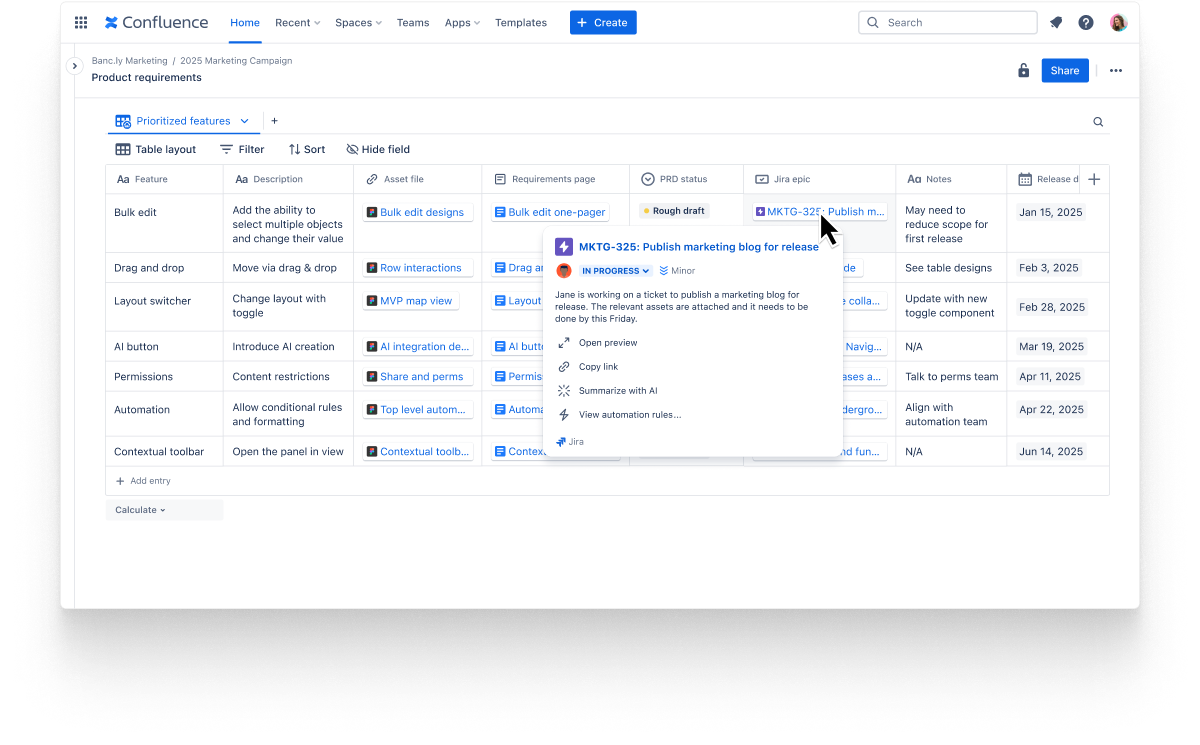Keep data structured and in-sync among teams
With the rise of hybrid and remote work environments, companies often face challenges with maintaining productivity across locations. In fact, a recent survey of Fortune 500 and 1000 executives revealed that low productivity was their top-ranked challenge of the year. While various factors contribute to productivity issues, team collaboration is essential to solving them.
With distributed work becoming the norm, teams need fast, effective, and accurate tools more than ever before. Effective collaboration and good workflow are crucial for teams to function properly, especially when users are not in a shared, central office space. So how can distributed teams stay in-the-loop about the most important project information without sacrificing accuracy or quality? The answer is Confluence databases.
Introducing Confluence databases
Today, we are excited to announce the launch of Confluence databases. Confluence databases are a central source of information that dramatically changes the way that teams can organize, reference, and display data in Confluence.
Designed to drive consistency and visibility across teams, Confluence databases allow users to store information in a central location that can be shared anywhere in Confluence. With automatic syncing, Confluence databases also make it easy for teams to access the most up-to-date shared information, ensuring alignment and reducing duplication.
For a more tailored experience, users can even customize the way data is displayed with multiple layouts and filters, creating a curated library of knowledge that meets their specific needs.

Centrally organize knowledge
With Confluence databases, your team can collect and organize the data from the tools you use most, including Jira, Confluence, and other third-party apps. This centralized system ensures that storing and locating information is quick and seamless.
- Organize Pages: Easily create and edit new pages. Pages created from a database entry automatically generate the database’s fields as page headers, keeping content consistent and aligned.
- Import Data: Import entries directly from Jira or information from CSV and HTML into a Confluence database, making entry input fast and easy.
- Utilize Independent Structure: Create and manage databases as standalone content inside Confluence. Databases are not dependent on pages to exist.
Keep knowledge in sync
Keeping information current is a key aspect of teams working together with shared missions and goals. Confluence databases increase alignment across teams with instant syncing and updates across databases.
- Stay Updated: Syncing automatically updates data from the source, making sure your team is always looking at the most current information.
- Reduce Human Errors: Use metadata to reference page information and avoid tedious and error-prone manual inputs.
- Reduce Duplicate Work: Embed databases anywhere in Confluence, ensuring your team always references up-to-date information without recreating it.
Visualize your work, your way
Confluence databases empower you to tailor information to your audience with personalized views, ensuring different teams, stakeholders, and leadership get the insights they need.
- Change Layouts: Configure how information is displayed by converting your database into different layouts such as tables, cards, or boards so you can choose the most effective format for whoever is viewing your database.
- Filter, Sort, and Search: Control how your entries are displayed using specified filters, sorting options, and search functionality. With these features, Confluence databases make it simple to sift through your information and find exactly what you need.
- Control Views: Hide fields from your view by deselecting them in the menu list, helping you focus on the most relevant information to your task
Confluence databases empower your team to structure, sync, and visualize their work, ensuring consistency and visibility across your organization.
Try out Confluence databases for free today.

